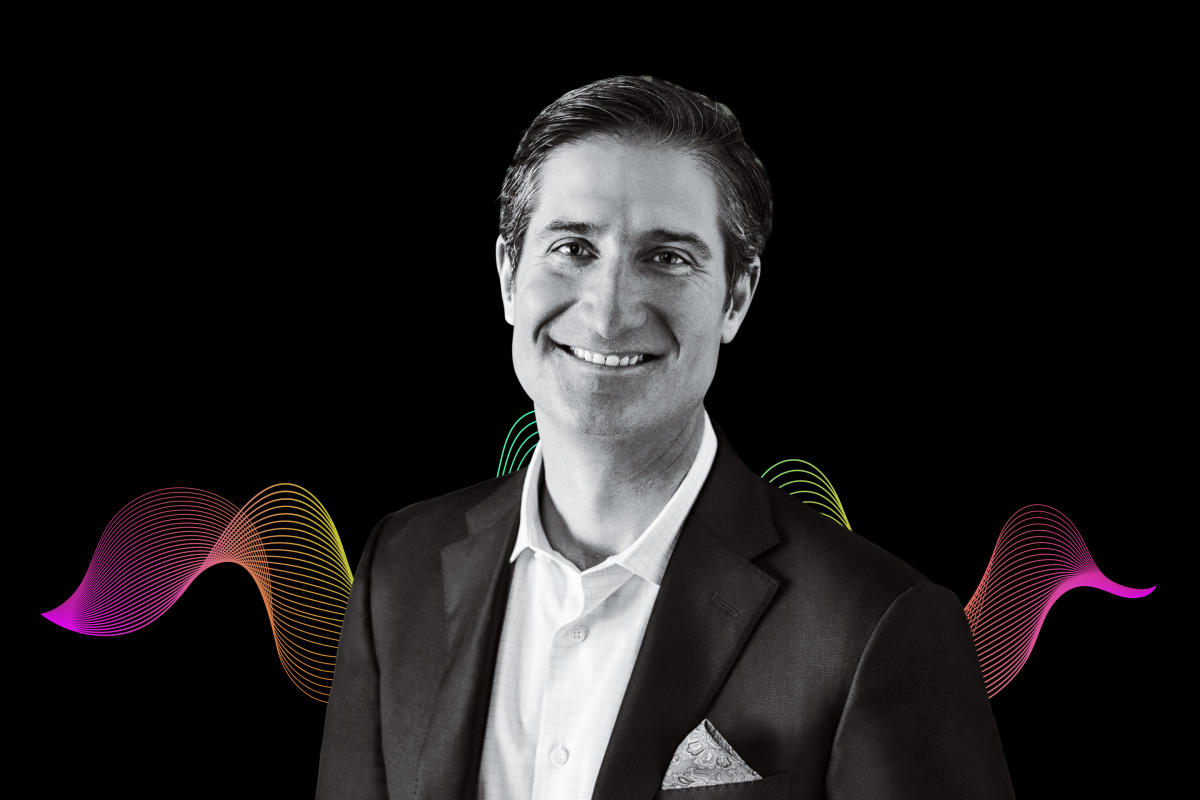Brian Niccol’s Leadership at Starbucks

Brian Niccol, the current CEO of Starbucks, brings a wealth of experience in the food and beverage industry, honed through his leadership roles at Domino’s Pizza and Taco Bell. This diverse background has equipped him with a unique perspective and skillset that he has leveraged to steer Starbucks towards a period of growth and innovation.
Niccol’s Background and Experience
Prior to joining Starbucks in 2019, Niccol held the position of CEO at Domino’s Pizza, where he oversaw a remarkable turnaround. He implemented a digital-first strategy, investing heavily in online ordering and delivery services. This move significantly boosted Domino’s sales and market share, making it one of the most successful pizza chains globally. Before Domino’s, Niccol served as the President of Taco Bell, a subsidiary of Yum! Brands. He spearheaded the development of new menu items and marketing campaigns that resonated with younger consumers, contributing to Taco Bell’s strong growth during his tenure.
Key Strategies and Initiatives
Niccol’s leadership at Starbucks has been marked by a focus on several key areas, aiming to enhance customer experience, drive operational efficiency, and foster innovation.
Customer Experience
Niccol has emphasized the importance of personalized customer experiences, recognizing the changing consumer landscape. This has led to initiatives like:
- Starbucks Rewards Program: This program has been expanded and enhanced to provide more personalized rewards and offers, incentivizing customer loyalty and repeat business.
- Mobile Ordering and Payment: Starbucks has continued to invest in its mobile app, making it easier for customers to order and pay, reducing wait times and enhancing convenience.
- Personalized Recommendations: Starbucks has implemented AI-powered recommendations to suggest customized drinks and food based on customer preferences, enhancing the overall experience.
Operational Efficiency
Niccol has focused on improving operational efficiency to enhance profitability and streamline processes. This has involved:
- Investing in Technology: Starbucks has invested in new technology, such as automated brewing systems and digital kiosks, to improve speed and accuracy in stores.
- Optimizing Store Operations: Niccol has implemented changes to store layouts and staffing models to improve efficiency and reduce costs.
- Supply Chain Optimization: Starbucks has worked to optimize its supply chain, ensuring that ingredients are sourced and delivered efficiently, reducing waste and minimizing costs.
Innovation
Niccol has placed a strong emphasis on innovation, introducing new products and services to meet evolving customer needs and preferences. This has resulted in:
- New Product Launches: Starbucks has introduced new drinks and food items, catering to changing tastes and incorporating seasonal flavors and ingredients.
- Expanding Food Offerings: Starbucks has expanded its food menu, offering a wider range of breakfast, lunch, and snack options to cater to different meal occasions.
- New Store Formats: Starbucks has experimented with new store formats, such as smaller, more efficient stores and drive-thru-only locations, adapting to changing consumer preferences and urban landscapes.
Impact on Starbucks’s Growth and Profitability
Niccol’s leadership has had a significant impact on Starbucks’s growth and profitability. His focus on customer experience, operational efficiency, and innovation has driven:
- Increased Revenue and Profitability: Starbucks has consistently reported strong revenue and profit growth since Niccol took over as CEO, demonstrating the effectiveness of his strategies.
- Expanded Global Footprint: Starbucks has continued to expand its global presence, opening new stores in key markets and strengthening its brand recognition worldwide.
- Enhanced Brand Loyalty: Niccol’s focus on customer experience and personalized rewards has helped strengthen customer loyalty, driving repeat business and increasing brand advocacy.
Starbucks’s Performance Under Niccol’s Leadership
Brian Niccol took the helm of Starbucks in 2019, inheriting a company facing challenges like declining same-store sales and increasing competition. His leadership has been marked by a focus on innovation, digitalization, and customer experience, leading to significant changes in the company’s strategy and performance.
Financial Performance Under Niccol, Starbucks ceo brian niccol
Niccol’s tenure has been marked by a strong financial performance for Starbucks. Revenue and earnings have grown steadily, demonstrating the success of his strategic initiatives. Here is a breakdown of key financial metrics:
- Revenue: Starbucks’s revenue has grown consistently since Niccol became CEO. In fiscal year 2023, the company reported revenue of $32.3 billion, a 10% increase from the previous year. This growth is attributed to a combination of factors, including new store openings, increased digital sales, and higher average ticket prices.
- Earnings per Share (EPS): Starbucks’s EPS has also increased significantly under Niccol’s leadership. In fiscal year 2023, the company reported EPS of $3.44, a 12% increase from the previous year. This growth is driven by factors such as revenue growth, cost-cutting measures, and share buybacks.
- Same-Store Sales: Same-store sales, a key indicator of a company’s performance, have been positive for Starbucks since Niccol took over. In fiscal year 2023, same-store sales increased by 9%, indicating that existing stores are performing well and attracting more customers.
Comparison with Previous CEOs
To fully understand Starbucks’s performance under Niccol, it’s helpful to compare his tenure with that of previous CEOs.
- Howard Schultz: Schultz, the company’s founder, served as CEO for three different periods. During his time, Starbucks experienced significant growth, expanding its global presence and establishing itself as a dominant force in the coffee industry. However, his later tenure was marked by challenges such as declining same-store sales and a perceived disconnect with customers.
- Kevin Johnson: Johnson, who succeeded Schultz in 2017, focused on streamlining operations and improving efficiency. While his tenure saw some positive financial results, he faced criticism for a lack of innovation and a perceived focus on cost-cutting over customer experience.
Key Factors Contributing to Starbucks’s Success
Niccol’s leadership has been marked by several key factors that have contributed to Starbucks’s success.
- Digitalization: Niccol has prioritized digital innovation, recognizing the importance of online ordering, mobile payments, and personalized customer experiences. Starbucks’s mobile app has become a major driver of sales, offering features like mobile ordering, loyalty programs, and personalized recommendations. This digital focus has allowed Starbucks to engage with customers in new ways and increase efficiency.
- Innovation: Niccol has introduced new products and services, keeping Starbucks relevant in a competitive market. This includes expanding its food offerings, introducing new beverage formats like nitro cold brew, and experimenting with new store formats like drive-thru only locations.
- Customer Experience: Niccol has emphasized the importance of providing a positive customer experience, recognizing that this is a key differentiator in a crowded market. Starbucks has invested in its baristas, improving training and providing opportunities for career advancement. The company has also focused on creating a welcoming and comfortable environment for customers, both in its stores and online.
Challenges and Opportunities for Starbucks: Starbucks Ceo Brian Niccol

Starbucks, a global coffee giant, is not immune to the dynamic and ever-evolving market landscape. While the company enjoys significant brand recognition and a loyal customer base, it faces several challenges that could hinder its future growth. However, Starbucks has also identified opportunities for expansion and diversification that could propel the company to new heights.
Challenges Facing Starbucks
The current market environment presents several challenges for Starbucks.
- Increased Competition: The coffee industry is highly competitive, with numerous local and global players vying for market share. New entrants, such as independent coffee shops and emerging brands, are increasingly challenging Starbucks’ dominance, particularly in the specialty coffee segment. These competitors often offer unique coffee experiences, innovative brewing methods, and competitive pricing, putting pressure on Starbucks to maintain its edge.
- Changing Consumer Preferences: Consumer preferences are constantly evolving, driven by factors such as health consciousness, sustainability concerns, and a growing demand for personalized experiences. Consumers are increasingly seeking healthier options, ethically sourced ingredients, and personalized coffee experiences. Starbucks needs to adapt its offerings and strategies to meet these changing demands. For example, Starbucks is facing increased competition from plant-based coffee alternatives, such as oat milk and almond milk, as consumers prioritize their health and sustainability concerns.
- Economic Volatility: Global economic uncertainty, inflation, and rising costs of raw materials pose significant challenges for Starbucks. The company’s profitability is affected by fluctuations in commodity prices, labor costs, and consumer spending patterns. Starbucks needs to manage its costs effectively, optimize its supply chain, and adapt its pricing strategies to navigate these economic challenges.
- Digital Disruption: The rise of online ordering, delivery platforms, and mobile payments is transforming the way consumers interact with businesses. Starbucks needs to invest in digital technologies, enhance its online presence, and provide seamless digital experiences to remain competitive in this evolving landscape. This includes optimizing its mobile app, integrating with delivery platforms, and offering personalized recommendations based on customer preferences.
Opportunities for Growth and Expansion
Despite the challenges, Starbucks has identified several opportunities for growth and expansion.
- Global Expansion: Starbucks has a strong presence in many countries, but there are still significant growth opportunities in emerging markets. The company can expand its footprint in Asia, Africa, and Latin America, tapping into the growing middle class and increasing demand for coffee in these regions. For example, Starbucks has been expanding rapidly in China, leveraging its strong brand recognition and adapting its offerings to local tastes. The company has also been exploring new markets, such as India, where it is entering through partnerships with local players.
- Product Diversification: Starbucks can diversify its product offerings to cater to evolving consumer preferences. This includes expanding its food menu, introducing new beverage options, and exploring innovative product categories such as tea, smoothies, and plant-based alternatives. Starbucks has already taken steps in this direction, introducing new plant-based milk options and expanding its food menu with healthier choices. The company can further leverage its brand equity and customer base to introduce new products and expand into adjacent categories.
- Digital Innovation: Starbucks can leverage digital technologies to enhance its customer experience and drive growth. This includes investing in mobile ordering and payment systems, integrating with delivery platforms, and developing personalized recommendations based on customer preferences. Starbucks can also explore new digital channels, such as social media marketing, virtual coffee experiences, and online communities, to engage with customers and build brand loyalty.
- Sustainability Initiatives: Consumers are increasingly demanding sustainable practices from businesses. Starbucks can differentiate itself by focusing on sustainability initiatives, such as ethical sourcing of coffee beans, reducing its environmental footprint, and promoting social responsibility. The company has already taken steps in this direction, setting ambitious sustainability goals and investing in initiatives to reduce its environmental impact. Starbucks can further leverage its commitment to sustainability to attract environmentally conscious consumers and build a stronger brand image.
Brian Niccol, the CEO of Starbucks, is a man who’s not afraid to shake things up. He’s led the company through a period of significant change, including the introduction of new products and a renewed focus on customer experience. To learn more about his leadership style and vision for the future of Starbucks, check out this insightful article: starbucks ceo brian niccol.
It’s clear that Niccol is a visionary leader who is committed to keeping Starbucks at the forefront of the coffee industry.
Starbucks CEO Brian Niccol has faced his share of challenges, navigating the complexities of the global coffee giant. It’s interesting to note that his path to leadership shares similarities with the story of brian nichols , a young man who faced a tragic event and rose above adversity.
Niccol, like Nichols, has demonstrated resilience and determination, proving that even in the face of obstacles, success can be achieved. It’s this unwavering commitment that has helped Niccol steer Starbucks through turbulent times and position the company for continued growth.
